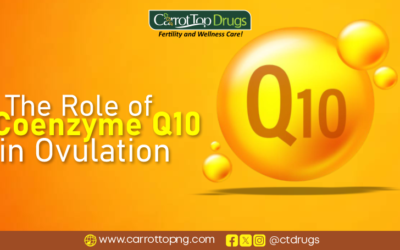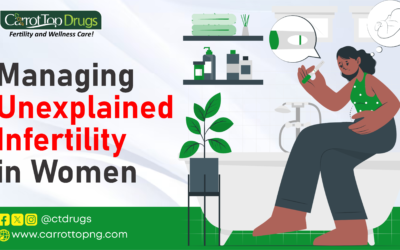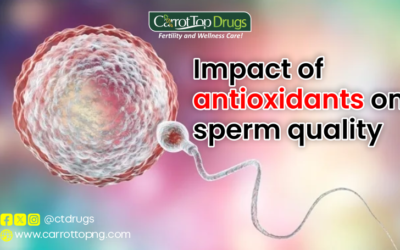A blighted ovum, which can also be referred to as anembryonic pregnancy, occurs when a fertilized egg attaches itself to the uterine well, but the embryo fails to develop. Cells develop to form the pregnancy sac, but not the embryo.
A blighted ovum usually occurs within the first trimester, often before a woman knows she is pregnant. The placenta still produces the pregnancy hormone (human Chorionic gonadotropin hormone), even though there is no embryo. Urine and blood pregnancy tests look for (human Chorionic gonadotropin hormone), so the blighted ovum could result in a positive pregnancy test even though the pregnancy is not actually progressing. Pregnancy symptoms such as nausea and breast tenderness could also occur.
A blighted ovum does not turn to a viable pregnancy and eventually leads to miscarriage. More information concerning a blighted ovum include the following:
SYMPTOMS OF A BLIGHTED OVUM:
Sometimes, a blighted ovum ends before you know you are pregnant. When this occurs, you may just think you are having a heavier than normal menstrual flow. A blighted ovum may have some symptoms associated with pregnancy such as: sore breasts, missed period and a positive pregnancy test. As the pregnancy ends, symptoms may include that of miscarriage, such as: abdominal cramping, vaginal spotting or bleeding.
Pregnancy tests measure pregnancy hormone (human Chorionic gonadotropin hormone) level, therefore, a blighted ovum could continue to result in positive tests before the tissues are passed. Usually, diagnosis is not made until an ultrasound test shows an empty gestational sac or an empty uterus.
WHAT CAUSES A BLIGHTED OVUM?
A blighted ovum usually occurs as a result of chromosomal problems. As a woman’s body recognizes abnormal chromosomes in a fetus, the body naturally does not try to continue the pregnancy because, the fetus will not develop into a healthy baby. This could be caused by abnormal cell division, or poor-quality sperm or egg.
HOW IS A BLIGHTED OVUM DIAGNOSED?
A blighted ovum is often discovered on the first ultrasound given during an antenatal appointment. The sonogram will show the empty embryonic sac and placenta. blighted ovum usually occurs between the 8th and 13th weeks of pregnancy.
WHAT ARE THE TREATMENT OPTIONS FOR A BLIGHTED OVUM?
If a blighted ovum is discovered during an ante-natal appointment, your Doctor will discuss treatment options with you. These may include the following:
- Having a D and C (dilation and curettage) surgical procedure to remove the placental tissues form the womb
- Waiting for miscarriage symptoms to naturally occur.
- Taking medication to bring on miscarriage
The length of your pregnancy and medical history should be considered, when you and your Doctor are making the decision concerning a treatment option. You may want to discuss the side effects and the standard risks associated with any type of medication or surgical procedure including D and C (dilation and curettage. Let your Doctor know if you are comfortable with any of the treatment options available to you.
CAN A BLIGHTED OVUM BE PREVENTED?
A blighted ovum cannot be prevented in most cases. You should discuss with your Doctor about possible genetic causes and testing procedures if multiple early pregnancy losses occur. A blighted ovum is often a one-time occurrence and a woman would rarely experience more than one. Most Doctors recommend couples should wait at-least 1 to 3 menstrual cycles again before trying to get pregnant after any type of miscarriage.
ARE THERE ANY COMPLICATIONS WITH FUTURE PREGNANCIES?
Your body and emotional well-being will need to time to heal just as with any miscarriage. You should discuss with your Doctor on how long you should wait before trying to get pregnant again. It is recommended to wait for three full menstrual cycles to enable your body recover fully to support pregnancy. During this period, you should focus on healthy lifestyle habits such as:
- Eating well
- Exercising
- Minimizing stress
- Taking dietary supplements that contain folic acid
Having a blighted ovum, does not mean you would have another one. However, there are factors associated with this type of miscarriage that you should discuss with your Doctor. These factors include sperm quality, genetics and egg quality. Your Doctor may recommend testing for these types of conditions:
- Semen analysis, which is used to determine the quality of sperm.
- Preimplantation screening (A genetic analysis of embryos tat can be done prior to implantation into the uterus).
- Follicle stimulating hormone test, which can be done to help improve egg quality.
In conclusion, chromosomal abnormalities as well as poor sperm or egg quality appear to be the main cause of a blighted ovum. Having a blighted ovum for the first time, does not mean you would have another one. You can still go on to have a healthy pregnancy. Dietary supplements like Evergreen Eggboost for women and Evergreen formular for men can improve egg quality, for successful fertilization and implantation and boost sperm quality in men.

















